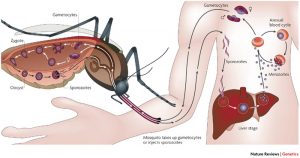
Sam Harris and Jerry Coyne have in a recent Youtube discussion and publication both explained how they studied religion, read lots of theology, before undertaking their anti-theistic critiques. Harris begins by informing us that in his twenties he read a wide range of religious traditions; Coyne tells readers he read much theology as he “dug deeper” into the questions that troubled him and as he did so he “realized that there were intractable incompatibilities between science and religion” that accommodationists “glossed over”. Heather Hastie has taken exception to a recent post of mine and pointed out that in her own research into terrorism she has downloaded a dozen issues of an online terrorist recruiting journal for study.
It is one thing to read what religious beliefs and claims are made by converts. It is quite another to study why they have embraced those beliefs, why those beliefs have the hold over believers that they do, and the relationship between those beliefs and claims and the extremist behaviours of adherents.
Gullible and weak minded?
There is a widespread perception among people who have never had much or anything to do with religious cults that people who join them are somehow the more gullible or weak-willed than average. Such popular perceptions are problematic. Some cult members demonstrate superior intelligence and knowledge in other studies in their life; and many of them are exceptionally strong-willed to the point of undergoing extreme sacrifices and hardship, even giving up their own lives and even the lives of loved ones when tested on their faith. That certain cults can generate a public presence beyond their actual numbers often shows they must have some extraordinary skills and determination to maximise the impact of their meagre human resources. The nineteen men who planned and carried out the 9/11 attacks were far from having lesser intelligence and from being weak-willed.
Recently I have been sharing snippets from anthropologist Pascal Boyer’s Religion Explained and in follow up comments have added a few more quotations addressing common views that people embrace religion because we they are seeking explanations to big or ultimate questions, or because they are gullible. In the past I have posted some explanations of how religious thinking differs from other types of thinking. (Understanding extremist religion; Religious credence part 1 and part 2; Science and religion; Fantasy and religion)
If we want to find a way to counter potentially dangerous extremist acts in the name of religion or simply wind back daily oppressive practices of some religions (e.g. choosing death over medical care, child abuse, denial of women’s rights) we will need to do more than simply present rational arguments. The converts do not shield themselves from opposing arguments; they are prepared for them and know how to counter them. Religious thinking does not work in the same way – we need to understand that.
I must thank Dan Jones for revitalising my interest in this question and providing me with new readings to follow up. I have already studied a few works on “how religion works” but need to do much more.
In the meantime, here is an alternative approach to what is required to understand how people acquire the religious mind. (Alternative, that is, to simply reading the theologies and ramblings of the religious texts themselves and thinking, “how bizarre!”, “how frightening!”).
The author, an anthropologist, would compare the methods of Harris, Coyne and Hastie to studying in depth the malaria pathogen — such a study alone will never explain how malaria spreads among some people and not others or the symptoms it produces. Continue reading “Studying Religious Beliefs Without Understanding How Humans Work”
